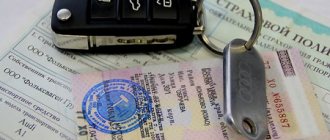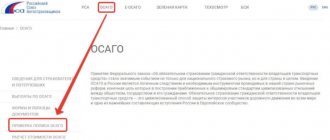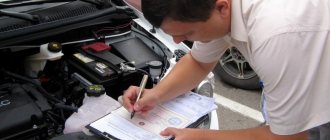Car exchange options
If we talk about exchanging a car for a car, there are several most common schemes:
- According to the exchange agreement.
- "Key to key."
- According to the trade in program.
In addition, no less common are the options of exchanging a car for real estate with an additional payment, or exchanging one type of vehicle for another (for example, a car for a motorcycle under an exchange agreement with an additional payment).
Please note that the exchange agreement itself will differ somewhat: between individuals, between an individual and a legal entity, of a mixed type, with and without additional payment.
Advantages of exchanging an old car for a new one
In this case, everything is relative: the exchange agreement is beneficial to someone who does not want or cannot sell the vehicle:
- From a financial point of view, it is more profitable to exchange vehicles than to sell one and buy another.
- There is less paperwork, especially since according to the new legislation there is no need to first deregister the vehicle.
- Convenient - because you don’t have to wait until one car is sold and the second is registered and ready for its intended use.
Regardless of which car exchange option you choose, you need to be especially careful about the legal side of the issue. It is much better if the contract is drawn up by a lawyer.
Preparing for the deal
Before signing an exchange agreement, you need to carefully check the vehicle for the following factors:
- Was the car stolen and is it currently on the wanted list?
- Insurance history of the vehicle.
- Presence of unpaid fines.
In addition, when signing an agreement, you need to carefully check the title documents for the vehicle, including the power of attorney if the car is being sold through a third party.
Required documents
What documents are needed when exchanging cars? The basic package of documents includes the following:
- Vehicle registration certificate.
- Vehicle passport.
- Title documents for cars.
- Personal passports of the parties.
- Barter agreement.
Immediately after signing the documents, in addition to the exchange agreement, the following is attached:
- The act of acceptance and transfer.
- Certificate of technical condition of the vehicle.
As a rule, other documents are not required when exchanging cars.
Is it possible to exchange a car for a car?
In practice, a car can be exchanged not only for another car, but also for a motorcycle, tractor, minibus or other type of transport. In this case, everything depends on the mutual desire of both owners. The golden rule when exchanging is: “The new car must be better than the previous one.”
The new car must be better than the previous one
Exchange procedure
When carrying out a vehicle exchange operation, the following sequence of actions should be followed:
- an advertisement about the vehicle being exchanged is posted on information resources (if there is no potential partner yet);
- when an acceptable option is found, the terms and conditions of the transaction are negotiated;
- the necessary documents are prepared;
- vehicles are checked by the parties to the transaction;
- a visit is made to the notary and the agreement reached is secured by a contract;
- an exchange is made, in some cases an additional payment is made;
- If necessary, the vehicle is re-registered to the new owner.
The exchange of a car for a motorcycle occurs in the same way as the exchange of a car for a car or, for example, for a tractor.
How to avoid risks when exchanging
As a rule, when selling, the seller hides all the problematic aspects of the car, because he wants to get the highest possible price. Something similar happens during an exchange. You should be especially careful with intermediaries.
There are actions that are highly advisable to take before concluding a deal:
- “Punch” the purchased car through the database of the traffic police and other services, record the absence of fines on the owner of the car, confirmation that the car is not under loan collateral, under arrest, on the wanted list, and so on. Experts advise not to be lazy, spare no expense, and turn to specialists who can find out the entire biography of the car.
- Make sure that the information contained in the technical passport of the vehicle fully corresponds to what actually exists. To do this, you should conduct a visual inspection yourself.
- As a supplement to the contract, draw up a detailed description of the car, discuss with the owner the completeness, in particular, the availability of tools, additional duplicate keys, equipment, winter or summer tires, and so on. It is not necessary to have the inventory certified by a notary; it is enough to sign a document with a transcript of the surname and preferably in the presence of at least two witnesses who also sign.
- Coordinate and approve the timing of the transfer of cars to new owners.
- Have the vehicle you are purchasing inspected by mechanics who will be able to identify possible hidden defects and breakdowns.
Before concluding a transaction, it is advisable to check the car at a service station
Today, many agreements are concluded on the Internet. Very often, car owners even live in different cities. It happens that in a foreign city there is no objective opportunity to inspect a vehicle or there is simply not enough time for this. In this case, it is highly advisable to insist on at least your right to visually inspect the car and verify all data with the technical passport. It is still better to make an exchange transaction in the presence of relatives, friends or good acquaintances.
Agreement of exchange between individuals
The actions of the parties in this case are regulated by Chapter 567 of the Civil Code of the Russian Federation. An exchange agreement is drawn up in free form, but the following content must be observed:
- Introductory part - it indicates the addresses and passport details of the parties.
- Description of cars - make, model, body color, license plates, engine and body number.
- Mark of ownership, with reference to data from the title and vehicle registration certificate.
- Agreed value of vehicles.
- Amount of additional payment (if necessary) and payment terms.
- Procedure and terms of transfer of the vehicle.
- Written confirmation that the cars are not in pledge, under arrest, wanted or stolen.
- Responsibilities and rights of the parties.
- Conditions for termination of the contract.
- Addresses and signatures of the parties, date of conclusion.
It goes without saying that the best option would be to have such a document certified by a notary.
Drawing up a car exchange agreement
Some people forget that there is an exchange agreement and they draw up two purchase and sale agreements. But why do you need extra red tape and waste of money? It is even more worth being careful if the other party insists on concluding two sales and purchase agreements. It may happen that the car was purchased after an accident or with altered VIN numbers. Then the only thing you will get is a reduced price, which the scammers specifically indicate in the contracts. And your car will remain with the scammers.
The exchange agreement must include:
- passport data of the parties to the exchange;
- Information about the car: VIN numbers, chassis and body, color, make and model, technical condition;
- settlement procedure if the exchange is made with additional payment by one of the parties.
- vehicle transfer procedure
- confirmation from the parties that the vehicles are not under arrest or pledged, and also that there are no disputes about the right (not required, but recommended).
Exchange agreement with additional payment
How to exchange a car for another if they have a significant difference in price? In this case, the best option would be to draw up an exchange agreement with an additional payment. It is concluded in the same way, but due to the difference in price, there will be the following additions:
- The amount of the surcharge must be indicated.
- The contract must indicate the actual cost of each vehicle.
- Mandatory condition: the owner of the cheaper car must pay income tax on the monetary difference.
Notarization is also highly recommended. We previously wrote in more detail about the exchange agreement with additional payment here.
Exchange under the trade in program
This option is perfect for those who want to exchange an old car for a new one, straight from the showroom. The main advantage of exchanging an old vehicle for a new one with such a program is that the procedure is carried out not with someone unfamiliar, but with a company, that is, a legal entity, so there will be no “pitfalls” or and other negative factors.
You can find out more about how to properly arrange a car exchange under the trade-in program here.
What is Trade-in and what are the conditions for exchanging a car for a new one?
Trade-in is a popular service offered by car showrooms and dealerships, in demand among owners of both domestic and foreign cars. It is worth remembering that different car dealerships and dealer networks offer different options for the trade-in program.
The most common trade-in option is when a car dealership buys your old car, counting its value towards payment for a new car purchased at this dealership, or as a down payment when buying a car on credit. The method is convenient, simple and efficient, but it has one drawback - the cost of the car being sold may be significantly lower than the market price, since the valuation is carried out by representatives of the car dealership who plan to make money on the further resale of your old car.
An additional type of Trade-in is to leave the car for sale, setting the price yourself or entrusting the assessment to a representative of the trade-in department of the car dealership. The disadvantage is obvious - the uncertain timing of the sale of your vehicle.
How to sell your old car to a car dealership using a trade-in scheme as profitably as possible:
- Remove all additional accessories from the interior: expensive covers, a roof rack, alloy wheels or an additional set of tires, since they do not have a significant impact on the final cost of the car, and it is more profitable to sell them separately, receiving additional funds that can cover the purchase of a new car or car loan payment
- To make the interior look neat and attractive, it is recommended to have your car professionally washed and cleaned before visiting a car dealership.
- If possible, inexpensively eliminate minor defects and problem areas of the vehicle, since car dealership managers will put pressure on these shortcomings, bringing down the price of your old car.
- Try to bargain with a car dealership representative with the hint that you can sell the car at a competing car dealership or online at a better price.
Key-to-key exchange
Already from the name you can understand that the exchange is carried out without additional payment, that is, it is equivalent - the owners simply exchange keys and documents for their vehicles, and, of course, there is no question of additional payment.
The contract must indicate the same value of the vehicles, otherwise the tax inspectorate may have unnecessary questions. The exchange agreement itself is drawn up according to the standard principle described above.
Please note that in all cases of exchanging a vehicle, the procedure can be carried out through a third party - subject to the presence of a power of attorney for such procedures.
Transaction options
This is where the most questions arise. Car owners are interested in how best and correctly to arrange a key-to-key exchange so that the cars can be transferred to new owners.
There are 3 options for completing the transaction. For this you can use:
- general power of attorney;
- barter agreement;
- contract of sale.
How exactly to proceed and which of the 3 types of documents to use, the parties decide independently by verbal agreement. If they decide to use PrEP, then they need to formalize it correctly. But practice shows that most often in such transactions it is the exchange agreement that is used. But the general power of attorney is a big question.
In order for you to understand the features and essence of each type of transaction, you need to talk about them in more detail.
PrEP
If you want to exchange vehicles, it is not uncommon to use a purchase and sale agreement. Many call it the most convenient and safest method. Yes, the degree of security of such a transaction is indeed at a fairly high level. That’s why PrEP is often used in exchanges.
The main problem with the contract is the need for additional paperwork. This is the most difficult transaction option in terms of formalities and documentation. But it is precisely the difficulties with documents that many perceive as a guarantee of security.
It will be better if you contact specialists when exchanging cars using a policy. Experienced lawyers will help you quickly complete all the necessary paperwork.
The parties sign two specially drawn up agreements between themselves. Moreover, each document is drawn up in 3 copies at once. The first goes to the buyer, the second remains with the seller. Another one will be needed for the traffic police.
A feature of such an agreement is the mandatory need to indicate the cost of the vehicles being replaced. But to enter information about the price of the car, you will have to contact an appraiser. This will allow you to find out the real cost.
If necessary, after the exchange the vehicle will be re-registered. To do this, it is enough to submit a corresponding application to the traffic police department.
The step-by-step exchange according to the policy is as follows:
- the seller and buyer each draw up 3 sales contracts;
- information about the cost of the vehicle is entered into the document;
- agreements are signed by the parties;
- all documents and keys are exchanged;
- vehicles will be re-registered to other owners.
No problem, except for the extra paperwork. It is because of this that motorists often decide to take the easier route. Moreover, one should not assume that a simplified procedure makes the transaction less secure. There is always a risk.
Barter agreement
Since there is an exchange of vehicles between the parties, the objectively most correct solution is to use an exchange agreement. This is a standard procedure that is most popular.
Here experts highlight the key advantage in the form of security of the transaction. Both parties fill out special documents. Next, the papers are sent to a notary for certification. After this, the vehicles officially change owners through the traffic police department.
Lawyers themselves recommend using an exchange agreement when exchanging cars. This makes it impossible for scammers to sell a stolen or loaned vehicle. If you suddenly encounter scammers who try to give you a problem car in exchange for yours, then you will have a legal right to demand compensation.
The template for the contract can be found in the public domain. Next, the document is filled out and signed. It is the procedure for filling out information that plays a key role here. The contract specifies information about:
- timing of vehicle transfer;
- the procedure for transferring vehicles;
- car cost;
- responsibilities of each party;
- technical condition of cars;
- brand;
- models;
- configurations;
- characteristics;
- responsibility;
- details;
- addresses;
- passport data.
After signing the agreement, the parties exchange cars, keys and documents. Next, the new owner contacts the traffic police, where the procedure for re-registering the vehicle in a different name takes place.
Power of attorney
Whether to use a general power of attorney or not is a matter for each seller personally. But here it is important to understand that this document is the most dangerous and risky way to exchange vehicles. Because of this, qualified lawyers recommend refusing any, even the most lucrative exchange offer, if the obligatory condition is the use of only a general power of attorney.
If there are no visible barriers, then in theory you can exchange cars under powers of attorney. To do this, each party draws up a document. The owner issues a general power of attorney to another person. The other side does the same. Next, the keys are exchanged.
In order to somehow secure the transaction, it is better to issue powers of attorney through a notary. The document states:
- dates;
- deadlines;
- powers;
- signature.
Considering all the potential risks, when exchanging vehicles key for key, it is better to refuse a general power of attorney. The option is not the worst if we are talking about an exchange between acquaintances who are on good terms. If this is a stranger, then it is better to choose one of two alternative options for completing the transaction.











